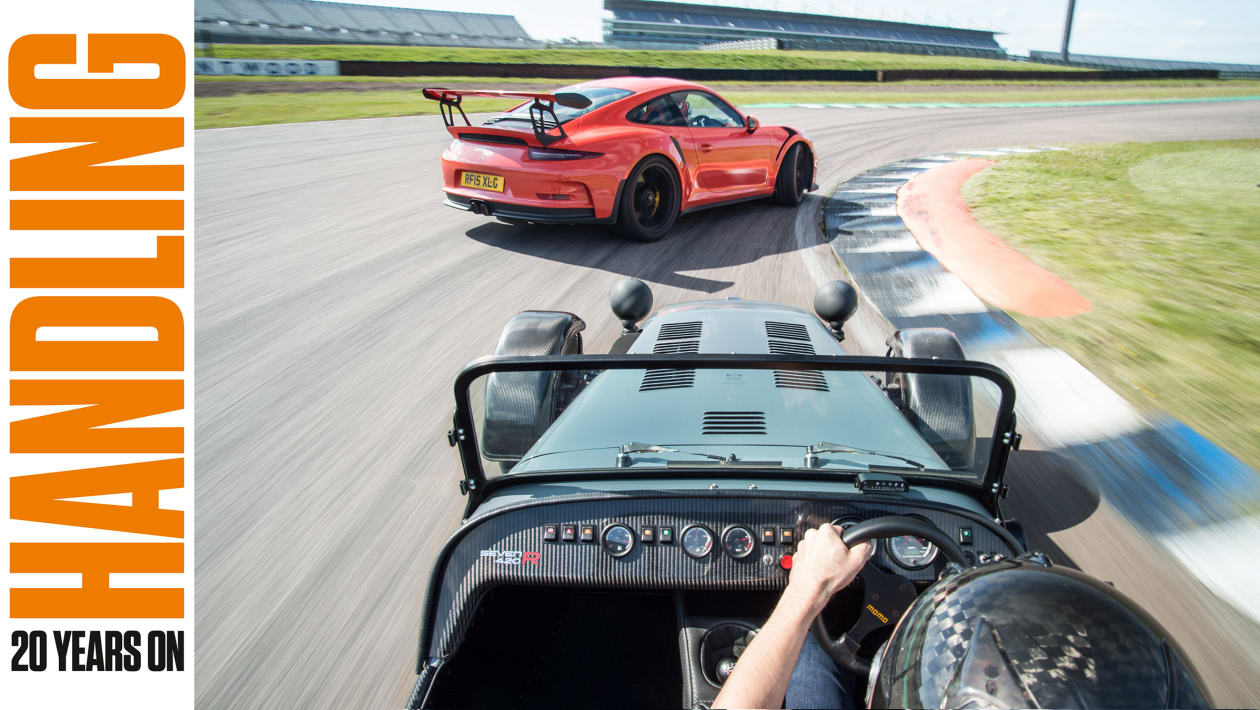Don't be over-sold by the marketing. Magnetic ride or "MagneRide" is just one of several methods for changing damping rates on the fly.
MagneRide is the (former) GM/Delphi brand name for magnetorheological damper technology. The business was sold as part of the Delphi bankruptcy to
BWI Group in 2009. That's BeijingWest, so they're Chinese-owned now, not that it matters though, because the chassis tech and suspension company is still in Ohio.
But let's talk in specifics about the damper technology. Magnetorheological systems apply a magnetic charge to the fluid which changes viscosity as magnetic charge aligns the ferrous particles suspended in the fluid. Instead of a traditional shim stack valve system they have several static-orifice fluid channels in the piston head and an on-piston electromagnet array that applies magnetic charge to the zone around it, so the area of the fluid passing through the channels changes viscosity when/where it counts. Most of these systems are simply High/Low viscosity based on the fluid makeup, but there are a few that have 3 states. One challenge with magnetorheological dampers for ultra-high-performance applications is that the viscosity change isn't totally instantaneous, it can sometimes take 0.25 seconds or more for the change to occur, depending the particular damper tech and design generation, and also the age/condition of the fluid. That's just fast enough to be effective in most street driving conditions but not always enough for truly instantaneous changes of damping on the fly in response to active inputs. It can also sometimes be forced through the channels on large suspension impacts faster than the magnet can change the fluid state... and in fact this is used intentionally to generate high-speed and low-speed compression damping rates as the fluid velocity exceeds the viscosity rate-of-change. MagneRide is pretty neat technology overall and has huge potential for street driven applications where sporty adaptive suspension tech is desirable, because the fundamental design is inexpensive to build compared to the most advanced/capable alternatives.
The other major technology used for electronically-variable dampers is valve-actuated, or sometimes solenoid-actuated. The former is just what you'd expect, a valve that opens when current is applied, and changes the path of the fluid. The solenoid type actually has a valve duty cycle and can be opened and closed rapidly to vary the percentage of fluid that moves through a set of channels rather than just a single on/off fluid diversion. Both do essentially the same job.
The valve-actuated type typically has the same general design of traditional shim stack damper technologies underlying them as a passive damper, except with multiple hydraulic fluid paths through the system. Generally this type has a lot more quality variability than MagneRide. Valve-controlled dampers can be either quite inexpensive (as in lots of OEM adaptive suspensions) or can be very advanced, depending on the fundamental design of the control valve system and the design of the shim stack valving that controls the actual suspension motion. At the end of the day the quality of the handling outcome is largely dependent on the engineering of the main valving itself, just like in a passive damper. Cheap valve-actuated suspensions typically have cheap outcomes. Expensive ones can exceed the raw performance capabilities of something like MagneRide, particularly where instantaneous on-the-fly changes are needed repeatedly in a fully-active control scenario. But even without the fully active controls, a high quality valve-actuated damper in a simple adaptive system gets a high quality result if matched appropriately to the spring, and can deliver outcomes equivalent to the best passive dampers in the world if the valving is equivalent. It's all down to the valving in the end.
The solenoid type can merge the best of both worlds... instantaneous variability of fluid pressures in different channels (by programmably variable percentage!) combined with either static-orifice fluid resistance or shim-stack damping, or both, sometimes in creative ways. FYI the biggest R&D and tech outfit for the solenoid type is
Moog, which was
started by the cousin of the guy that founded
Moog Music which
pioneered the audio synthesizer. Moog Valves are
used in Formula 1 suspensions, so these solenoid-driven variable damper designs underpin the most advanced active suspension technologies in the world. They're also used in a ton of different industrial and scientific and military equipment for this sort of purpose, and work in roughly the same way as a solenoid in a boost control system, or any other type of pulsed hydraulic fluid or pneumatic control. It's fun to me that electronic oscillation is an engineering discipline in common between music production and industrial controls, even though technically they aren't the same company. Clearly they shared some head space, which I think is pretty cool.
As always with dampers, real-world results for all of these systems often depend on the condition and quality of the hydraulic fluid and the age/condition of the parts. Any shim-stack valving based system tends to age a bit less gracefully than the MagneRide or other static-orifice designs, because the wear tends to be physical and also heat cycling naturally degrades the hydraulic fluid over time so the engineered viscosity of the fluid reduces. But all damper technologies are dependent in significant measure on the health of the fluid for performance and effective operation.
-pause for coffee- 
Beyond the damper tech itself there are big differences in control technologies between adaptive and active suspensions.
Adaptive (semi-active) tech tends to operate in high/low modes (comfort/sport settings) and has relatively minimal feedback from the chassis dynamics... you see this as the most common type of electronically variable suspension systems from most major OEMs.
Fully active systems use continuous chassis dynamics sensors in an active feedback loop to the suspension controller, and adjust the suspension on the fly to either maximize comfort (sky-hook model) or maximize grip and handling at the expense of comfort (ground-hook model), or some combination of both. These systems (of any damper type) can exceed the real-world results possible with the highest quality passive dampers
only if the damper itself is of high quality
and the control technology enables meaningful variation at the right times based on dynamic conditions. Without both of those things being true, a good passive damper typically gets a higher quality outcome for the engineering dollar spent.
Fully active suspension technology with live dynamic feedback is relatively uncommon in passenger vehicles because it's both expensive to implement and also has a lot of different potential failure modes, including ones that can endanger the occupants if things go poorly. That being said, we are now seeing it more often in high end luxury vehicles and in the most extreme performance models, as the sophistication of onboard networked systems continues to increase and the marginal costs for real-time-processing computer control systems continues to drop. Most OEMs are continuing to hedge their bets around safety even in the most extreme applications though, and don't typically implement the kind of extreme performance-focused logic programming in active systems sold to the public that the systems are theoretically capable of. That stuff is still almost exclusively the domain of motorsport-specific development programs that provide engineering support to factory-backed and privateer motorsport efforts.
The aftermarket provides a few notable exceptions to that wall between motorsport development and vehicles sold for use on public roads... one example is DSC Sport out of Maryland, who I mentioned once previously. I understand they assisted GM with some tuning consultancy for their IMSA Corvette factory race team's MagneRide system on the C7R, and provided some input to the C8 production active suspension tuning as well after the initial real-world results for the factory system were not as predictable or finely balanced as GM had hoped. Despite the explosion of capable damper hardware from so many OEMs, the practical tuning expertise in this particular niche seems to still be quite limited. It's comparable to the early days of fully programmatic engine management systems, where factory development programs had all the newest technology but it took them a decade to build (or in-source) best-of-breed tuning expertise in-house.
I know this was long, but hopefully it helps provide some context on these technologies and where we currently stand with them, particularly as enthusiasts who depend on a complex automotive industry to provide integrated and tuned products to the marketplace so that we can enjoy them and/or criticize/deconstruct them.









